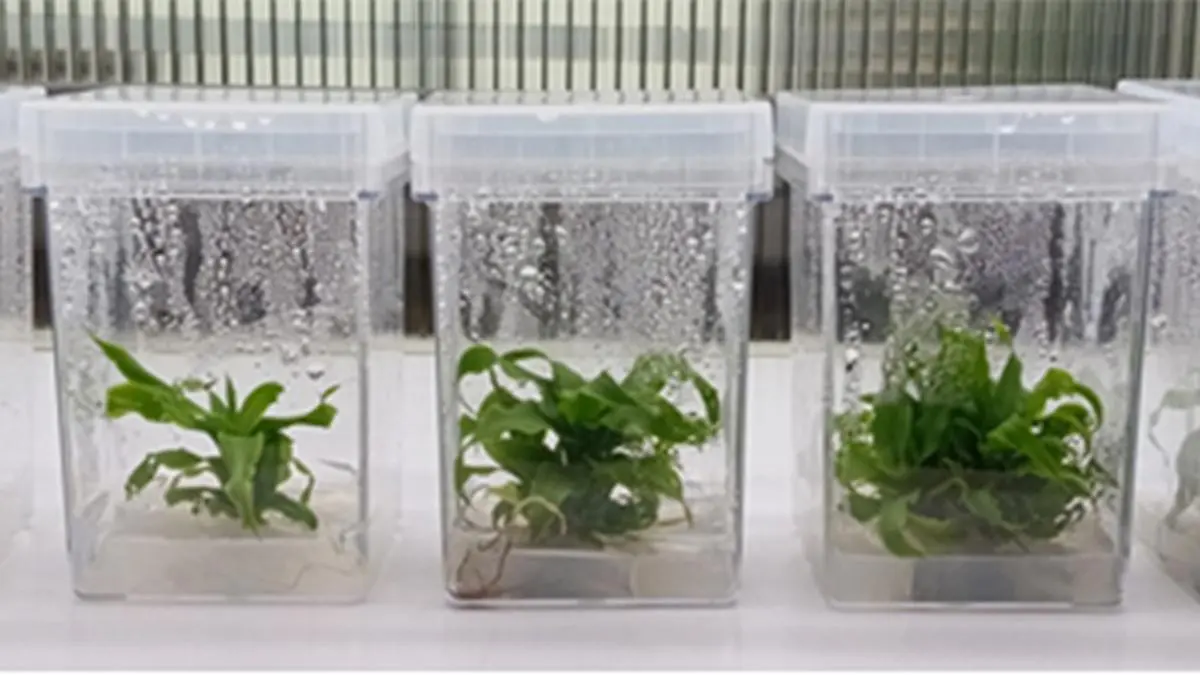Transgenic pineapple plants
Indian researchers have identified a gene in pineapple that promises to lead to a powerful, homegrown line of defence against devastating fungal attacks.
The pineapple (Ananas comosus) is the most economically significant fruit of the Bromeliaceae family, valued for its nutritional benefits, alongside a delicious juicy flavour.
One of the biggest threats to pineapple farming is a disease called Fusariosis, caused by the aggressive fungus Fusarium moniliforme. It warps the plant’s stem, blackens the leaves and rots the fruit from the inside out. Traditional breeding techniques have struggled to keep up with the fast-evolving onslaught of such fungal foes.
Researchers at Bose Institute, Kolkata, have identified the gene behind the somatic embryogenesis receptor kinase (SERK), which can activate host defences against plant diseases.
Focusing on the AcSERK3 gene, part of the pineapple’s genetic code known for helping plants reproduce and survive stress, Prof Gaurab Gangopadhyay and his PhD student Dr Soumili Pal enhanced — or ‘overexpressed’ — the gene in pineapple plants. This charged up the plant’s natural defences to fight the Fusarium fungus far more effectively.
“The AcSERK3-overexpressed pineapple lines were more resilient to Fusarium infection than susceptible wild pineapple variety, due to increased stress-associated metabolites and scavenging enzyme activity. In controlled tests, these transgenic plants stood tall and green, while regular pineapples wilted under fungal siege,” says a press release.
A new multi-fungal tolerant pineapple variety could be developed through a long-term field study, enabling growers to plant varieties that can withstand multiple fungal threats.
Point-of-care sepsis diagnosis

Portable endotoxin detection device
A group of scientists from the National Institute of Technology, Calicut, have developed a highly sensitive, low-cost point-of-care device with an electrochemical biosensor for early diagnosis of sepsis. The portable device has eight distinct sensor architectures; it is used for detecting endotoxins rapidly and accurately, says a press release.
It detects endotoxin in blood serum using a standard addition method, providing results within 10 minutes.
Sepsis is a serious medical condition caused by an infection and can lead to multiple organ failure, shock and even death. Early and accurate diagnosis is crucial for timely therapeutic intervention and improving patient outcomes. Early diagnosis is possible with the precise and sensitive detection of specific biomarkers. Endotoxin, a toxic component of the outer membrane of gram-negative bacteria, acts as a key biomarker, signalling the presence of an infection that could lead to sepsis.
In all the sensors, appropriately modified nanomaterials such as gold atomic clusters or nanoparticles, cupric oxide, or copper nano-clusters, molybdenum disulphide, reduced graphene oxide, or carbon nanotubes were used to enhance sensitivity.
The team has demonstrated a highly sensitive electrochemical sensor chip for the detection of lipopolysaccharide, which is compatible with a portable analyser for on-site detection.
The sensor is fabricated using functionalised carbon nanotubes and copper (I) oxide nanoparticles.
Two of these electrochemical platforms demonstrated versatility by enabling the sensitive detection of gram-negative bacteria, specifically E coli, in water samples. This highlights their potential for efficient water quality monitoring.
More Like This
Published on July 28, 2025
